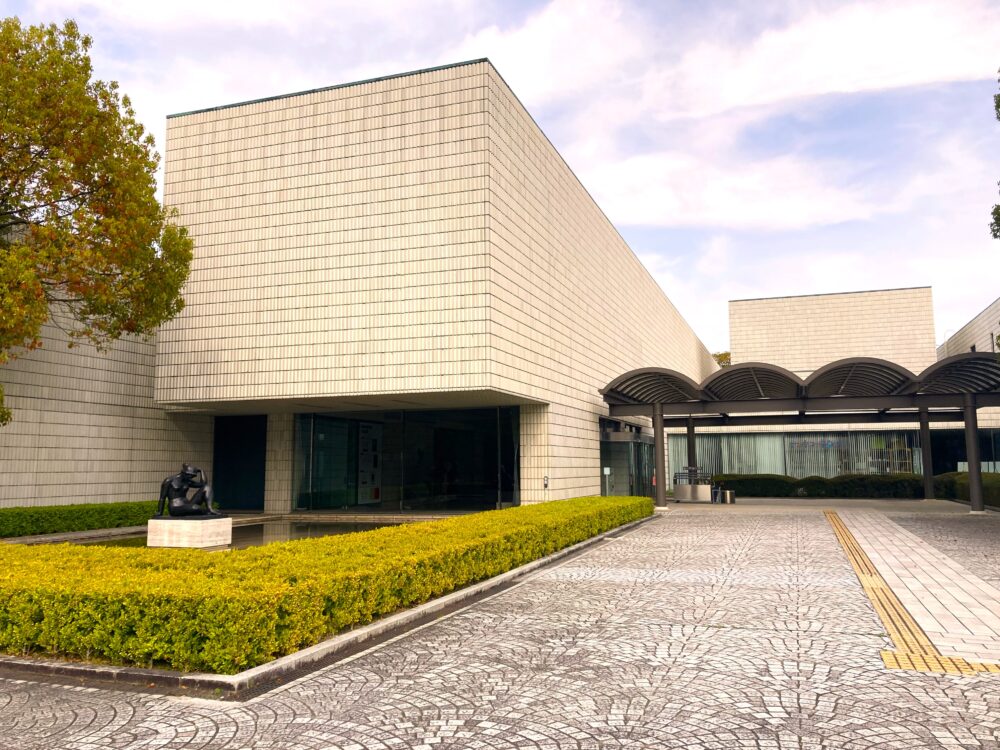
A Dreamlike World by Odilon Redon—Right Here in Gifu!
When people think of the Gifu Prefectural Museum of Art, the first name that often comes to mind is Odilon Redon.
Known for his mysterious and dreamlike works, Redon continues to attract visitors from across Japan and beyond. In fact, the museum houses over 250 works by Redon, making it one of the top Redon collections in the country.
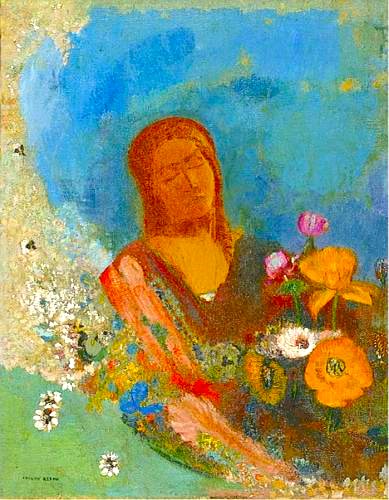
Hosui Yamamoto—A Western-Style Art Pioneer from Gifu
Another highlight of the museum is Hosui Yamamoto, a Western-style painter from Gifu.
He was one of the first Japanese artists to embrace Western art techniques during the Meiji era. At the museum, you can take your time viewing major pieces such as “Nude Woman” and “Urashima-zu”.
This article shines a spotlight on the Gifu Prefectural Museum of Art and dives into the captivating worlds of Redon and Yamamoto. Step into the calm atmosphere of the museum and immerse yourself in the beauty of art.
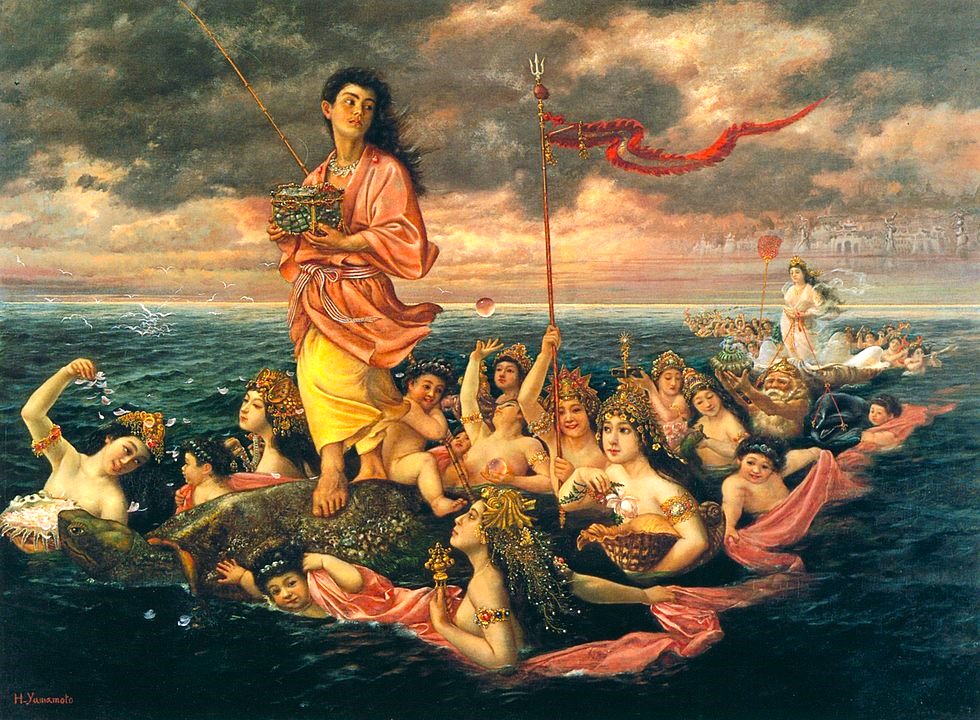
Discover the World of Odilon Redon at the Gifu Prefectural Museum of Art: Between Shadows and Color
Odilon Redon was a leading figure in the Symbolist movement in France during the late 19th and early 20th centuries.
His works, full of mystery and emotion, offer a unique artistic experience that’s hard to forget.
With over 250 pieces in its collection, the Gifu Prefectural Museum of Art offers one of the most comprehensive Redon experiences in Japan.
Let’s explore how Redon’s style evolved over time and take a closer look at some of his most iconic works in the museum’s collection.
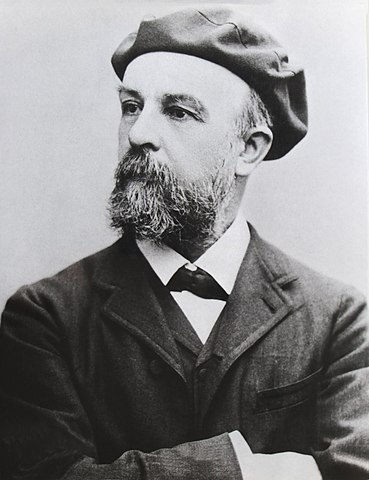
Dark Fantasies in Black: Redon’s “Noirs” Period
Odilon Redon’s early works, known as Noirs, revolve around one key theme—black. Created using charcoal and lithography, these mysterious pieces feature surreal and often unsettling imagery.
You’ll find strange plants shaped like eyeballs, flowers with human faces, and eerie creatures floating through the sky.
They’re bizarre, yet oddly charming—like nightmares and fairy tales woven into a single dreamlike scene.
Many of Redon’s works from this period are deeply connected to poetry and literature. They offer rare glimpses into the artist’s rich inner world.
Redon once wrote:
“One must respect black. […] Nothing prostitutes it. It does not please the eye and it awakens no sensuality. It is the agent of the mind far more than the most beautiful color to the palette or prism.”
— Odilon Redon, quoted by The Metropolitan Museum of Art
To Redon, black was not just a color—it was a tool for exploring the depths of the mind.
His fascination with shadows may have begun in childhood. He was known to hide behind curtains or in dark corners, letting his imagination run wild in quiet, hidden places.
It’s easy to imagine how those early moments helped plant the seeds of fantasy that would later blossom into his iconic Noirs.
The Awakening of Color: Redon’s Later Years
After the 1890s, Odilon Redon’s art took a dramatic turn. He moved away from his monochromatic “Noirs” and began creating colorful works in pastel and oil paint.
The reasons behind this shift aren’t entirely clear. Some believe it was influenced by personal events—such as the death of his first son and the birth of his second—or by his growing friendship with Paul Gauguin and his rising fame in the art world.
One of the most important points here is how different Redon was from the Impressionists. While the Impressionists focused on capturing natural light and outdoor scenes, Redon sought to express something deeper: the light of the mind.
“They (the Impressionists) attempted to adopt color or light while still holding to their last ties to classical works. They are classical, because they also follow external, concrete ideals in painting. […] I believe that when one thinks alone, disregarding everything but that which happens outdoors under the brow—that is, for thought itself—it is an insufficient attitude. The expression of life reveals itself in light and shadow. Philosophers prefer shadow.”
Source: Translation by the author from the 2024 Japanese edition of Odilon Redon’s journal À soi‑même (To Myself: Notes on Life, Art and Artists), published by Misuzu Shobo.
For Redon, color wasn’t a tool to copy nature—it was a way to express inner mystery and the unseen world.
Unlike earlier painters who focused on how colors looked in the real world, Redon used color symbolically and spiritually. This is why his colorful works still feel dreamlike, mysterious, and filled with emotion.
Experience the Power of Seeing Redon’s Originals
At the Gifu Prefectural Museum of Art, you can explore the full range of Odilon Redon’s work—from the dark, detailed textures of his early Noirs to the soft, radiant pastels of his later years.
Photos alone can’t capture the quiet, dreamlike atmosphere of his real paintings. In person, each piece feels alive with depth and mystery. Take your time in the calm of the museum and fully immerse yourself in Redon’s world.
Japanese Western-Style Painting Pioneer: Discover the Hidden Masterpieces of Hosui Yamamoto
Featuring National Important Cultural Property Works
In the Meiji era, a bold new style of painting began to take root in Japan—Yōga, or Western-style painting. One of its earliest pioneers was Hosui Yamamoto (1850–1906). At a time when oil painting was still largely unknown in Japan, Hosui traveled to France to study academic techniques directly from European masters.
At the Gifu Prefectural Museum of Art, visitors can view two of his most important works:
- Nude Woman (c. 1880) – Designated Important Cultural Property
- Urashima-zu (1895) – a Japanese myth told through Western technique
These two paintings were created in entirely different contexts—one in Paris during his early studies, and the other after returning to Japan. Seen together, they tell a powerful story of Hosui’s growth and artistic journey.
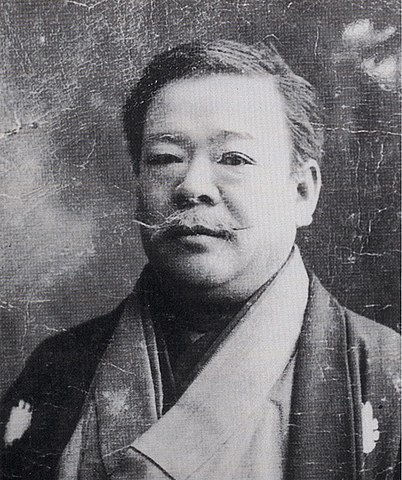
Nude Woman (c. 1880)
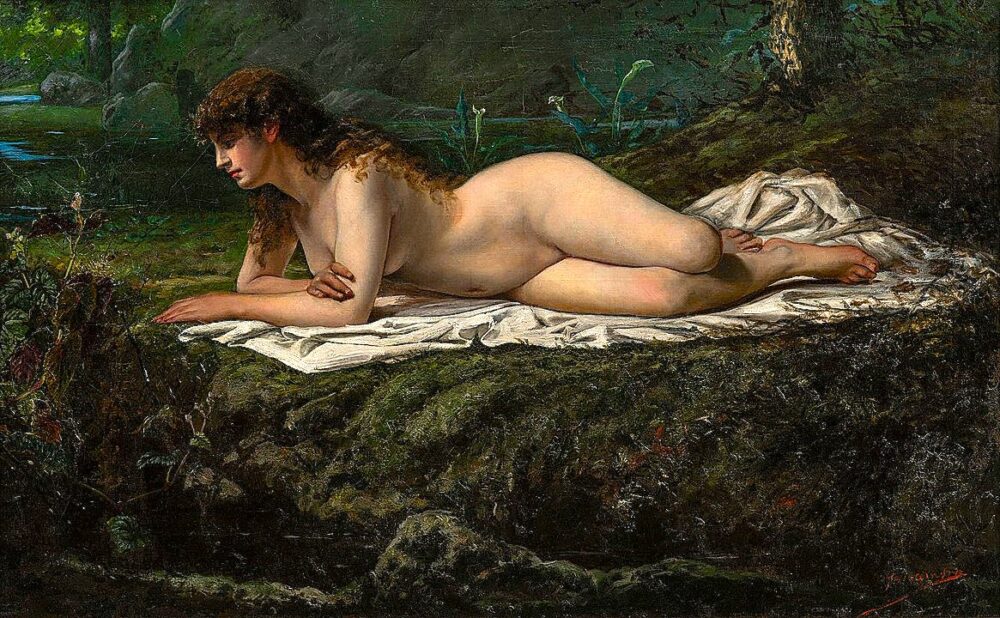
Designated Important Cultural Property
This early masterpiece was painted while Yamamoto Hosui was studying in France. He trained under Jean-Léon Gérôme, a leading figure of academic art. You can clearly see Gérôme’s influence in the way Hosui renders the texture of skin and the delicate play of light and shadow.
At the time, Impressionism was rising in France, but Hosui stayed committed to classical techniques. For Japanese artists just discovering oil painting, realism was the essential first step. Hosui embraced this, developing his skills from the ground up.
Tragically, most of the works he painted while abroad were lost at sea. When the warship Unebi sank during his return voyage, nearly all of his paintings went down with it. But Nude Woman survived. It was purchased directly in Paris by a wealthy Niigata landowner, Shirase Waichirō, and safely brought to Japan.
This painting is more than just a portrait—it’s a rare survivor, a symbol of the Japanese pursuit of art overseas, and a key to understanding the roots of Western-style painting in Japan. No wonder it was designated as a National Important Cultural Property.
Urashima-zu (c. 1893–1895)

After spending nearly nine years studying in France, Hosui Yamamoto returned to Japan and created this large-scale painting, Urashima-zu. The scene shows the legendary Urashima Tarō being guided by attendants as he returns from the undersea Dragon Palace. Every detail is painted with precise Western academic realism.
From the soft textures of skin to the ripples in the water and the layered fabrics floating beneath the surface—nothing is stylized or abstract. It feels like a moment frozen in time, as if a stage photograph had been carefully translated into oil paint.
What makes this painting so fascinating is its cultural blend: a classic Japanese folktale rendered in European technique. The subject is purely Japanese, but the style is rooted in French academic art. This direct combination of “Japanese themes × Western painting” was a major challenge for many Meiji-era artists like Hosui.
However, this academic approach slowly fell out of fashion. A new generation of painters—such as Seiki Kuroda, influenced by French Impressionism—began to favor brighter, lighter styles. Artists like Hosui were labeled as “old school” and gradually forgotten.
That’s why Urashima-zu can be considered a “hidden masterpiece.” While it may not match the colorful ease of Impressionism, it shows Hosui’s deep respect for technique and his sincere effort to connect traditional Japanese stories with the oil painting methods he mastered in Europe.
You might wonder:
What if academic realism had become the mainstream in Japanese art?
The visual landscape of Japanese painting today might look very different.
More Highlights from the Gifu Prefectural Museum of Art
Discover Hidden Gems by European Masters
Gifu Prefectural Museum of Art houses not only works by Redon and Hosui Yamamoto, but also a range of beautiful paintings by major European artists. Here are two standout works you shouldn’t miss:
Paul Sérusier, “Phantom Near a Torrent, or The Fairies’ Rendezvous“ (1897)
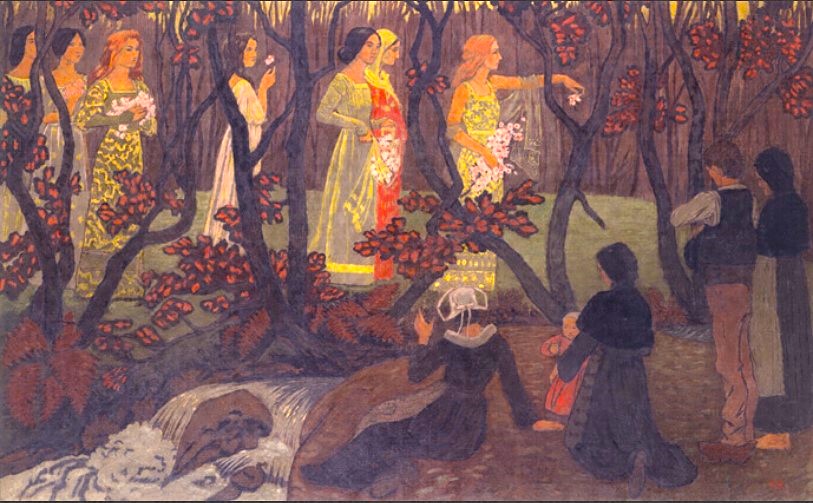
About This Work (Tap or Click to View)
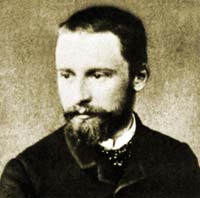
Who Was Paul Sérusier?
Paul Sérusier (1864–1927) was a key figure in the French Nabis movement, a group of artists who broke away from realism to explore symbolism, spirituality, and decorative style. In 1888, Sérusier studied under Paul Gauguin in Pont-Aven, Brittany, where he painted The Talisman, a small but revolutionary work that helped spark the Nabis movement.
Unlike the Impressionists, the Nabis were not concerned with faithfully painting what they saw. Instead, they aimed to express inner feelings, using bold colors, flat shapes, and symbolic themes.
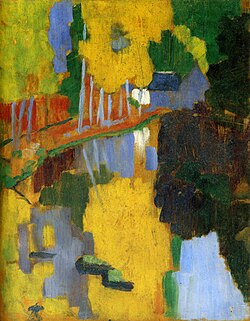
Sérusier often chose religious or mystical subjects, as seen in this painting Phantom Near a Torrent. In it, two worlds collide: in the foreground, villagers kneel in shadow; in the background, glowing fairies line up in the light. Between them stands a dense forest, forming a mystical border between reality and fantasy.
The painting’s palette is subtle, not overly bright, yet it has a quiet rhythm and harmony. The tension between light and shadow, reality and vision, creates a dreamlike mood.
Spend a few quiet moments in front of this piece, and you may feel as though you are one of the villagers—watching silently as a magical world appears before your eyes.
Even after Gauguin left for the South Pacific, Sérusier stayed in Brittany, painting its landscapes with sincerity and deep respect. This work reflects not only his spiritual side, but also his connection to nature and his love for the land.
This is a deeply symbolic piece that bridges tradition and modernity—perfect for travelers who love mystical and meaningful art.
Henri Le Sidaner, “House by the River Under the Moonlight” (1920)
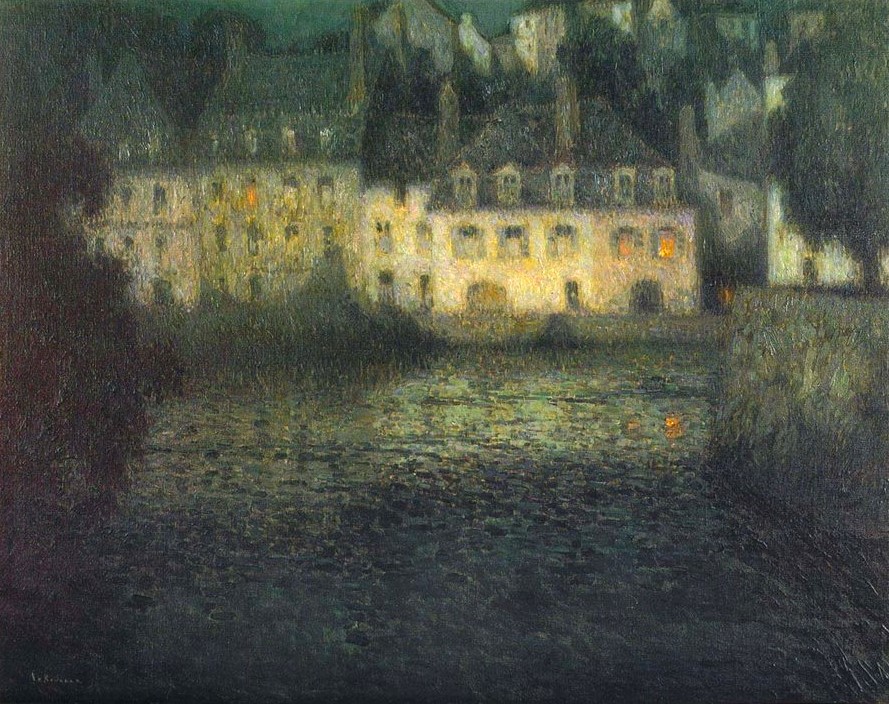
About This Work (Tap or Click to View)
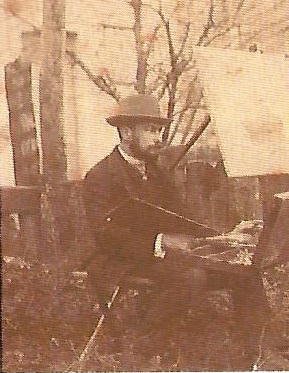
The Quiet Beauty of Henri Le Sidaner
Henri Le Sidaner (1862–1939) was a French painter known for his soft, atmospheric style. His work blends Impressionism and Symbolism, often focusing on moments of quiet reflection.
In House by the River Under the Moonlight, there are no people shown—but you can feel their presence. The glowing windows, the soft reflections on the water, and the peaceful buildings suggest life just out of sight.
The color palette is gentle, with deep blues and grays creating a calm nighttime setting. Small touches of yellow and orange light add warmth, while white walls subtly reflect the glow of street lamps.
Though the scene is still and silent, there’s a sense of story. Maybe someone is waiting by the river. Maybe it reminds you of a place from your past. The painting invites you to imagine your own narrative.
Le Sidaner wasn’t just painting landscapes—he was capturing emotions and memories. His work is about those quiet, unspoken moments that stay with us.
If you love peaceful art that touches the heart, don’t miss this painting at the Gifu Prefectural Museum of Art.
Final Thoughts|Encounter Tranquility Through the Art of Redon and Hosui
The Gifu Prefectural Museum of Art is home to one of Japan’s top collections of works by Odilon Redon, known for both quality and volume. It also features two major paintings by Hosui Yamamoto, including the Nude, designated as an Important Cultural Property in 2014, and the powerful Urashima-zu.
Though Redon and Hosui may seem very different at first glance, they actually share a surprising connection: both studied under the French academic painter Jean-Léon Gérôme.
Yet, their paths diverged. Redon moved away from Gérôme’s academic style to create his own dreamlike world. Hosui, on the other hand, deeply absorbed Gérôme’s techniques and brought back the foundations of Western realism to Japan—becoming one of the pioneers of modern Japanese oil painting.
Seeing their works side by side reveals the diverse ways Western painting was interpreted and reimagined. It’s not just an art history lesson—it’s a deeper reflection on what it means to truly “look” at art.
The museum also houses beautiful pieces by European artists like Henri Le Sidaner and Paul Sérusier, adding to the tranquil experience of your visit. The Gifu Prefectural Museum of Art offers more than just visual beauty—it offers a peaceful, reflective space.
Take time to slow down. Stand in front of the paintings. Let them speak to you in silence.
Sometimes, the most meaningful discoveries are the ones that can’t be put into words.
Visitor Information|Gifu Prefectural Museum of Art
Locaion: 4-1-22 Usa, Gifu City, Gifu Prefecture, Japan
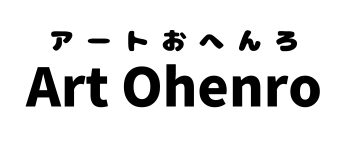
















Comments